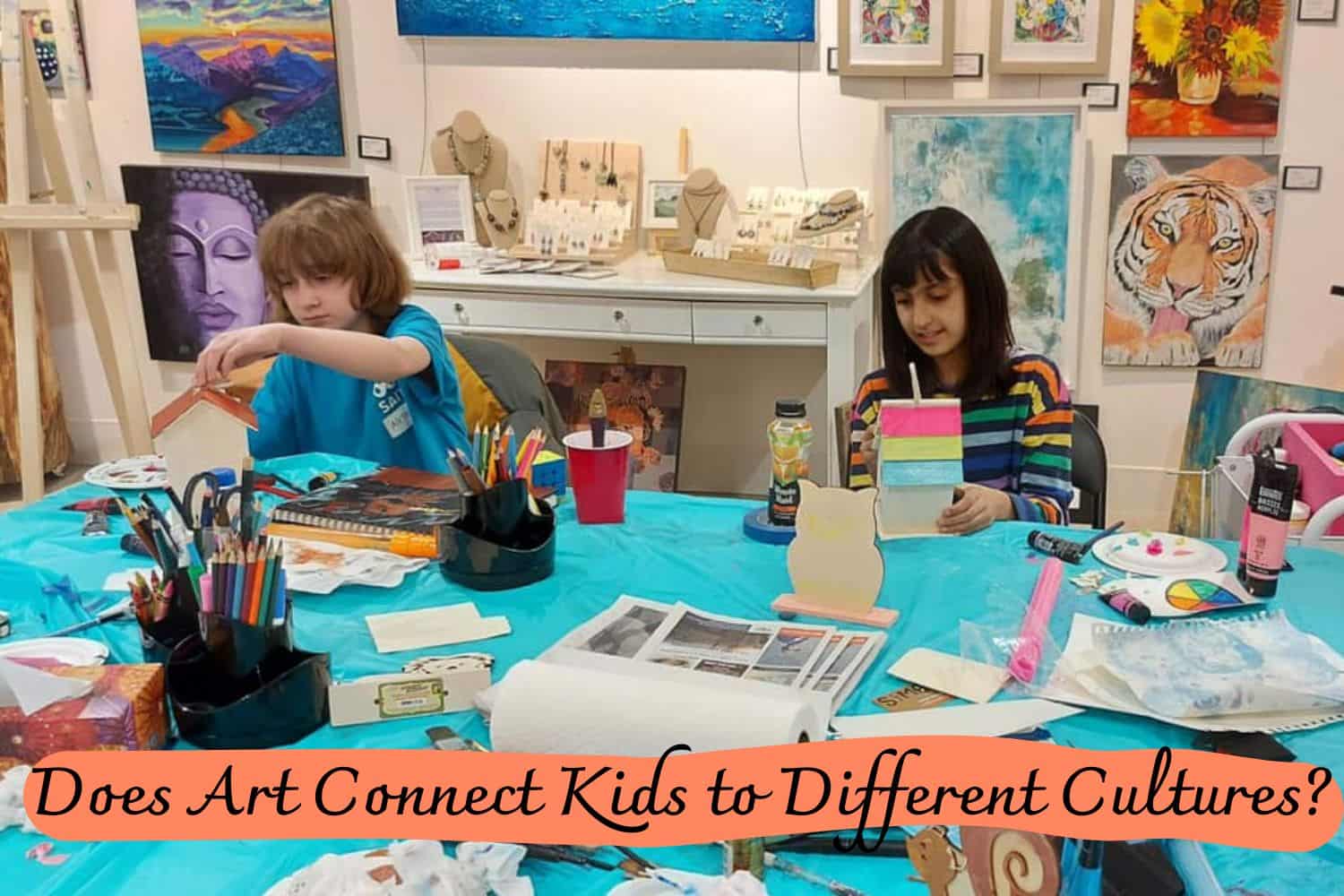Does Art Connect Kids to Different Cultures? Learn how art can be used to bridge cultural gaps, promote tolerance and respect, and connect kids with different cultures across the world.
Does Art Connect Kids to Different Cultures?

We all know how powerful art can be — it helps us connect, express our emotions, tell stories, and create something beautiful.
But Does Art Connect Kids to Different Cultures?
Discovering new cultures through visual art forms like sculptures and paintings can open up unique avenues for children to absorb information, far beyond the confinement of textbooks. Similarly, delving into the rich tapestry of musical history and exploring diverse genres can foster a profound connection between children and various cultures.
Through the process of creating artwork, children get an opportunity to explore new perspectives and better understand different ways of life. From expanding their knowledge of traditional cultural practices to discovering what makes each culture unique — art has so much to offer when it comes to connecting kids from all backgrounds with various cultures around the world.
In this blog post, we will dive deeper into how artwork provides a platform for understanding different cultures and why it’s important for both kids and adults alike.
Why art is important in connecting kids to different cultures?
Art offers a unique lens into understanding different cultures and allows people to explore various perspectives. The artwork serves as a bridge between the unknown and the familiar, uniting us all through a shared appreciation of beauty.
From ancient paintings by renowned artists such as Rembrandt, Da Vinci, and Picasso to vibrant street art created in urban cities around the world — the artwork is a wonderful way to learn more about cultures, people’s beliefs, and customs.
Not only that but art also helps kids develop important skills like critical thinking and creativity — both of which are essential when it comes to connecting with different cultures.
How Does Art Connect Kids to Different Cultures?
Enhancing Cultural Connections Through Art and Music
Discover the power of art and music in cultivating cultural awareness and personal connections. By immersing themselves in visual imagery and learning about art history, students develop a deeper understanding of cultural diversity. Through sculptures and paintings, they engage with different cultures in a unique and impactful way, surpassing the limitations of traditional textbook learning.
Similarly, delving into the rich tapestry of musical history and exploring a variety of music genres enables children to forge connections with diverse cultures. The universal language of art and music brings people together, fostering a sense of belonging and shared experiences.
Unleash the transformative potential of art and music to nurture cultural understanding and enhance personal connections.
Unlocking Cultural Awareness and Connection: The Power of Art for Kids
Discover the transformative power of art in fostering cultural awareness and connecting children to the world. Regardless of their background or knowledge, children and teenagers can immerse themselves in the visual arts of different cultures and periods.
As children embark on their artistic journey, their curiosity and enthusiasm for other people’s art is ignited, especially when it resonates with their style, medium, or subjects. Through the creative process, children develop a lasting affinity for the arts and culture, creating a vital bridge to new connections and experiences.
A recent study highlighted that art programs can cultivate empathy and open-mindedness in students, magnifying the impact of art on their personal growth.
Join us in embracing the potential of art to connect kids to people and the world, fostering cultural understanding and enriching their lives.
The importance of teaching kids acceptance and appreciation for other cultures through art
With the world growing ever more connected, children of all ages need to be taught appreciation and acceptance of different cultures. Art provides a unique platform to foster cultural understanding and educate kids about different values and practices.
In addition, art can be used as a tool for self-expression, helping young people develop empathy as they explore the stories behind each artwork. When children see the similarities between them and other cultures, they are more likely to have respect for different perspectives and beliefs.
Moreover, art is a great way to spread awareness about social issues, such as poverty, injustice, and climate change. By encouraging kids to create artwork that focuses on these themes, we can help them become active agents of change in their communities.
Conclusion
From a young age, art can bring powerful connections to different cultures. In particular, exposing kids to art from around the world helps build their empathy and understanding of other cultures.
Art provides a platform to engage in activities that bring meaning and connection across cultural boundaries. It serves as a tool for building bridges of understanding between different people even if they come from completely different backgrounds.
Art also provides an avenue for kids to explore and appreciate new cultures, which can help them learn valuable lessons about the world around them.
Similarly, creating artwork based on diverse cultures gives kids creative outlets to express their unique experiences with those cultures.
At its core, art is a powerful form of communication that helps cultivate important insights about other cultures, and by connecting through art we can better appreciate and understand what exists beyond our worldviews.
Ultimately, engaging in the arts is an important step toward reinforcing relationships between people from diverse backgrounds – a movement that should be actively encouraged for children of all ages.
Thanks for reading our article Does Art Connect Kids to Different Cultures? If you want to know more information, visit our website here.
Read more:
